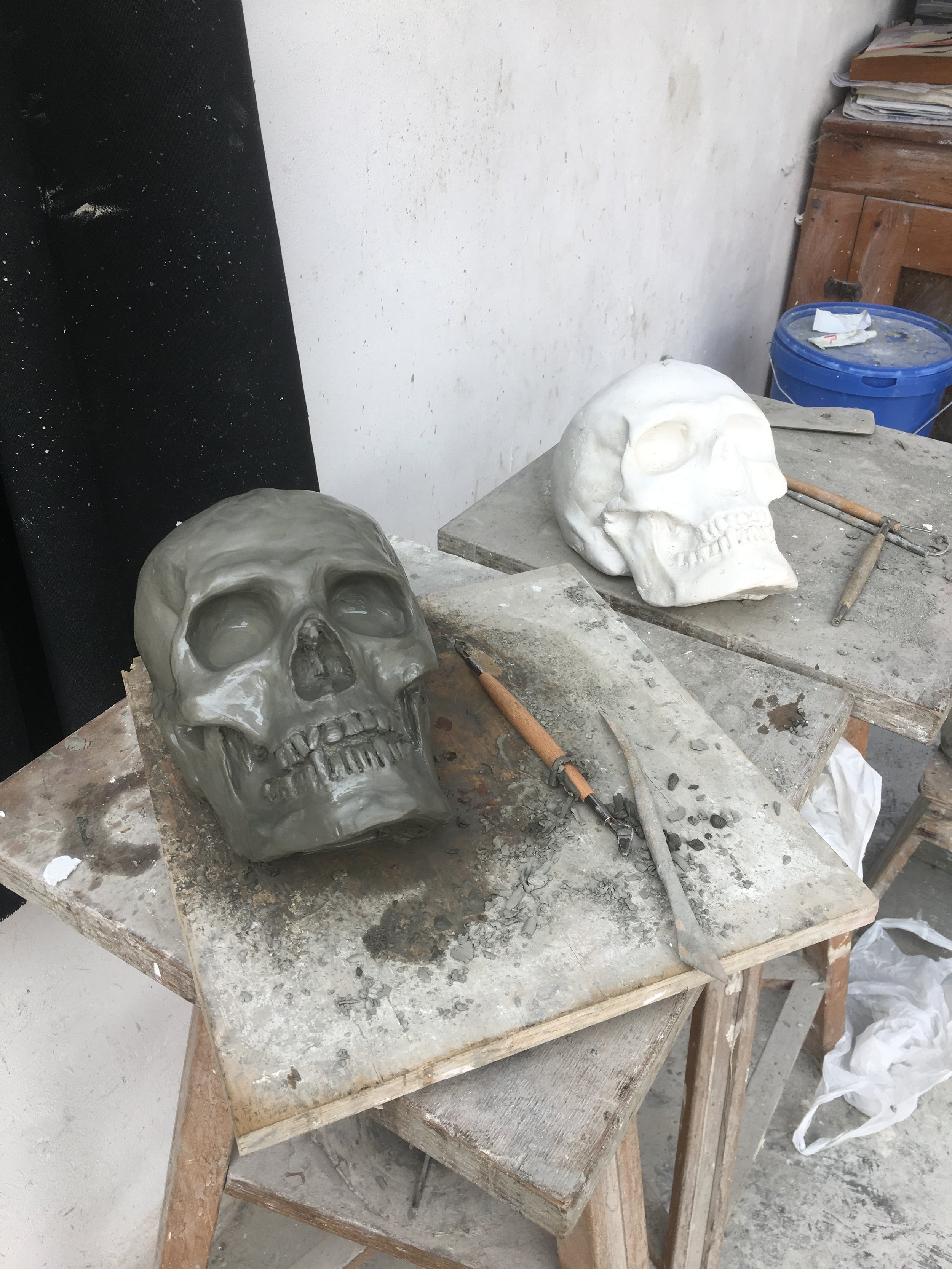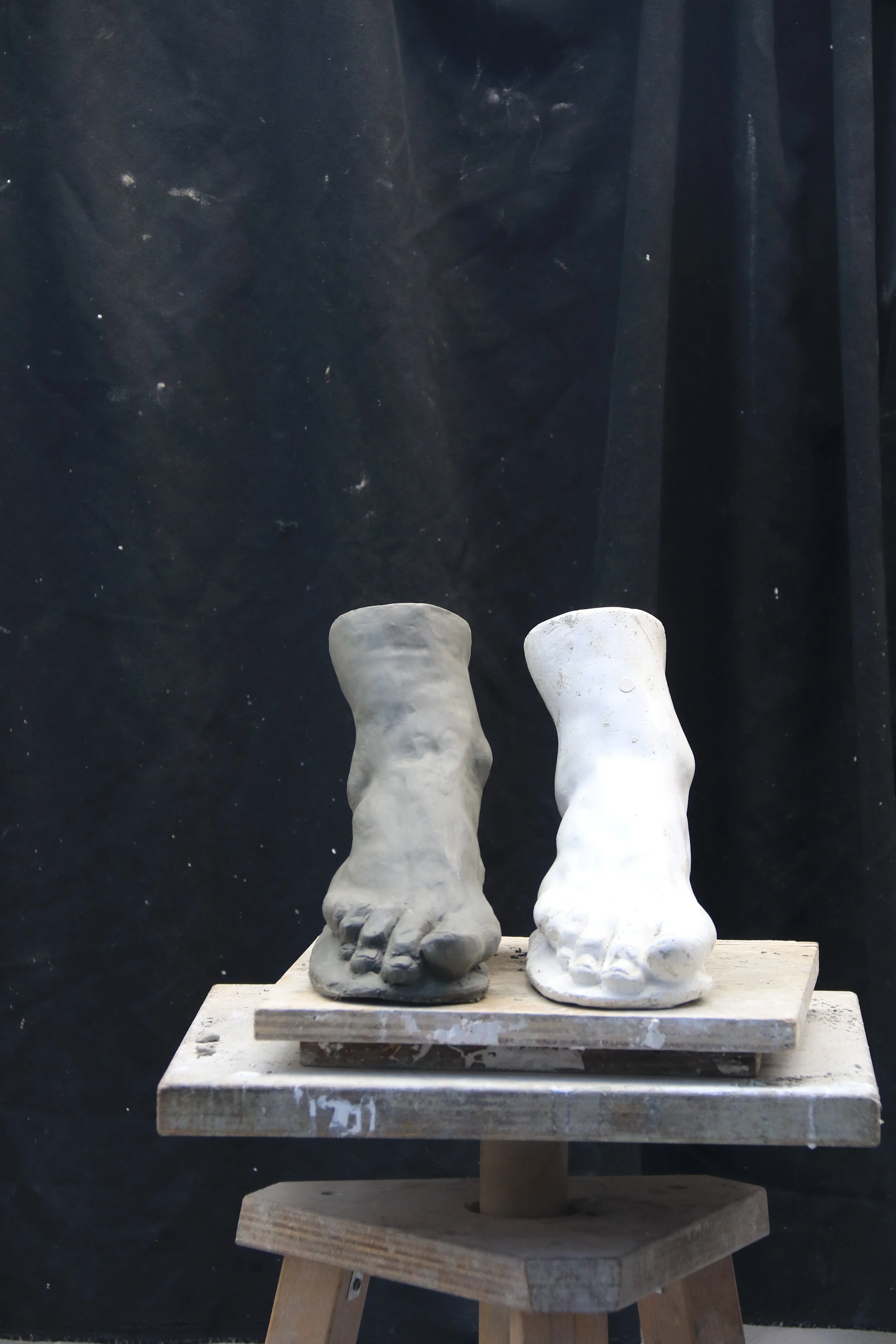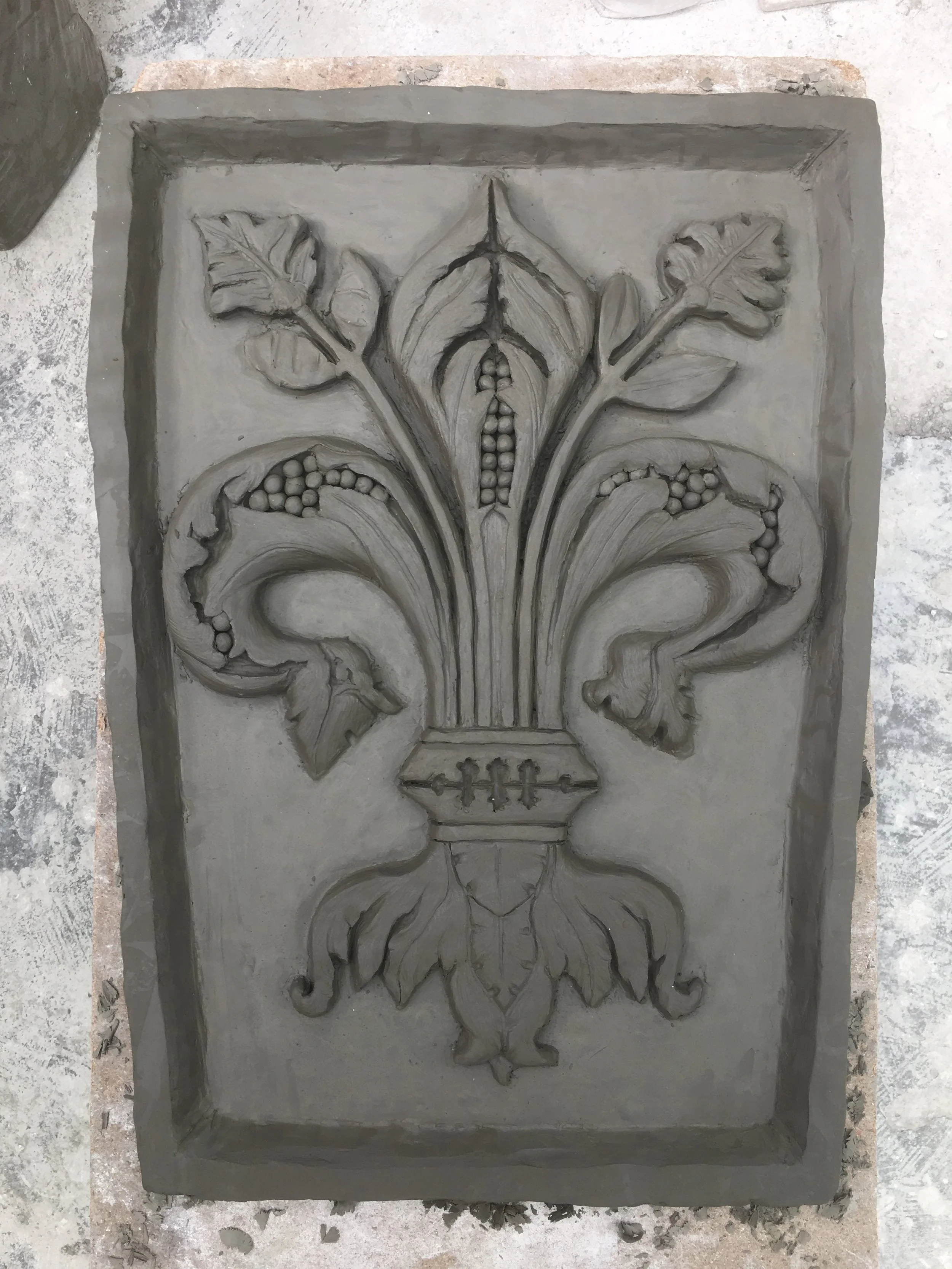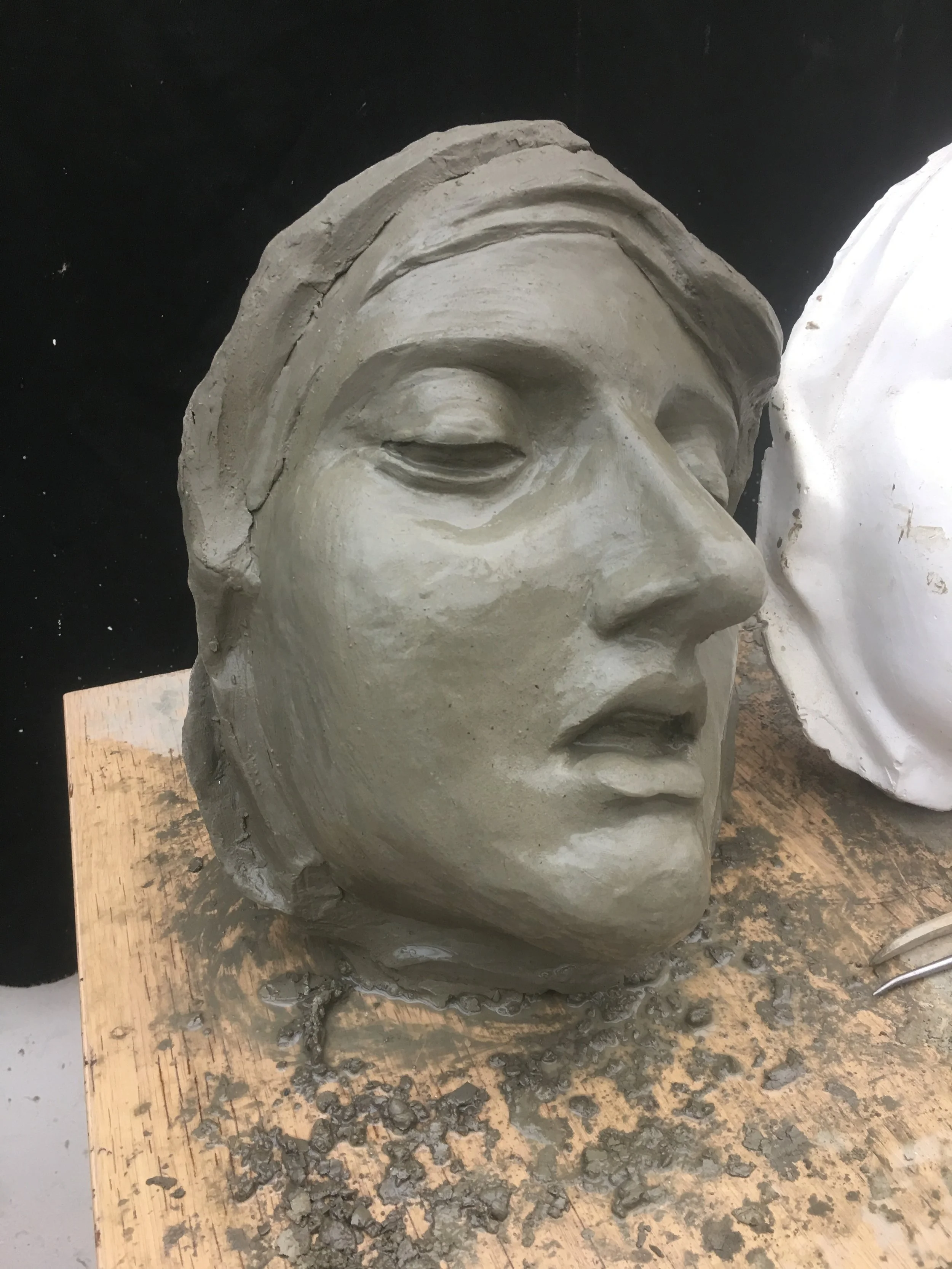Galleria Romanelli, Using an Armature
While still finishing the foot sculpture, Raffaello recommended starting a second sculpture. Sometimes moving back and forth between sculptures helps you see details in both you may have missed by only working on one piece at a time. Another challenge was to work more quickly, as clay can always be reworked if a mistake is made. For this sculpture we would be doing an anatomy sculpture on "The Flayed Man" which is in the Bargello Museum. To do this we would first need to create an armature, or wire frame of the sculpture to be copied and then mount it to the board. As seen with the earlier foot sculpture, a lack of support will cause the wet clay to compress changing its shape, this is why a wire support is needed.
The Rough Armature
Once we had the armature in a rough shape we mounted it to the board with wire. The wire we used was slightly too small so once clay was applied the sculpture would move slightly. In the future it is important to make sure it is always firmly secured, as movement causes problems as the sculpture progresses. Most of my projects and art in the past have been landscapes and architectural so It was a good challenge to continue working on anatomy. Because of the use of an armature, it is not possible to be able to fire this type of clay project. The only way to preserve such a work is to make a mold of it. I would run out of time working on other projects at the end of the internship and would not be able to make a mold of this one. Once it was dried, the clay is removed and the armature is left for someone else to use.
Aaron showing me how to mount the armature to the board.
After final adjustments, armature is ready for use
Applying clay to the armature
After the first 30 minutes, an extremely rough version is completed. The goal at this time was mostly to get the armature covered in clay so that it would harden so it could be worked further the next day. However, the armature should have been adjusted at this point to mirror the contrapposto of the plaster original. This would cause more work later.
The next day the shape is refined, but it is discovered the armature is not properly secured to prevent movement as the base clay hardens. I then build up clay at the base of the sculpture for support. I have never really done any work with faces before so I avoided it at this point and focused mainly on the torso.
As the sculpture progresses it becomes evident that the underlying armature needed more twist to form the proper contrapposto. Without this twist my version looks flatter. At this point also the face can no longer be ignored, and the angle of the head needs to be adjusted.
Here viewing a clay sculpture against a black background can help reveal missed details. Forced to finaly devote attention to the face i find smallest details give totally different impressions. The original sculpture having a convex nose and my version having a concave nose, the result is looking like two totally different people.
Here the nose is corrected, and extra clay at the base is removed. In trying to correct the angle of the twist of the neck I struck the armature resulting in the rust stain seen here. At this stage the clay is too hard to adjust the armature, so it is important to have it adjusted at the beginning.
One part I liked about this project was experimenting with different techniques. For example the ribs and serratus anterior, I carved into the chest and then back filled with extremely wet clay to give an appearance that was unique.
















